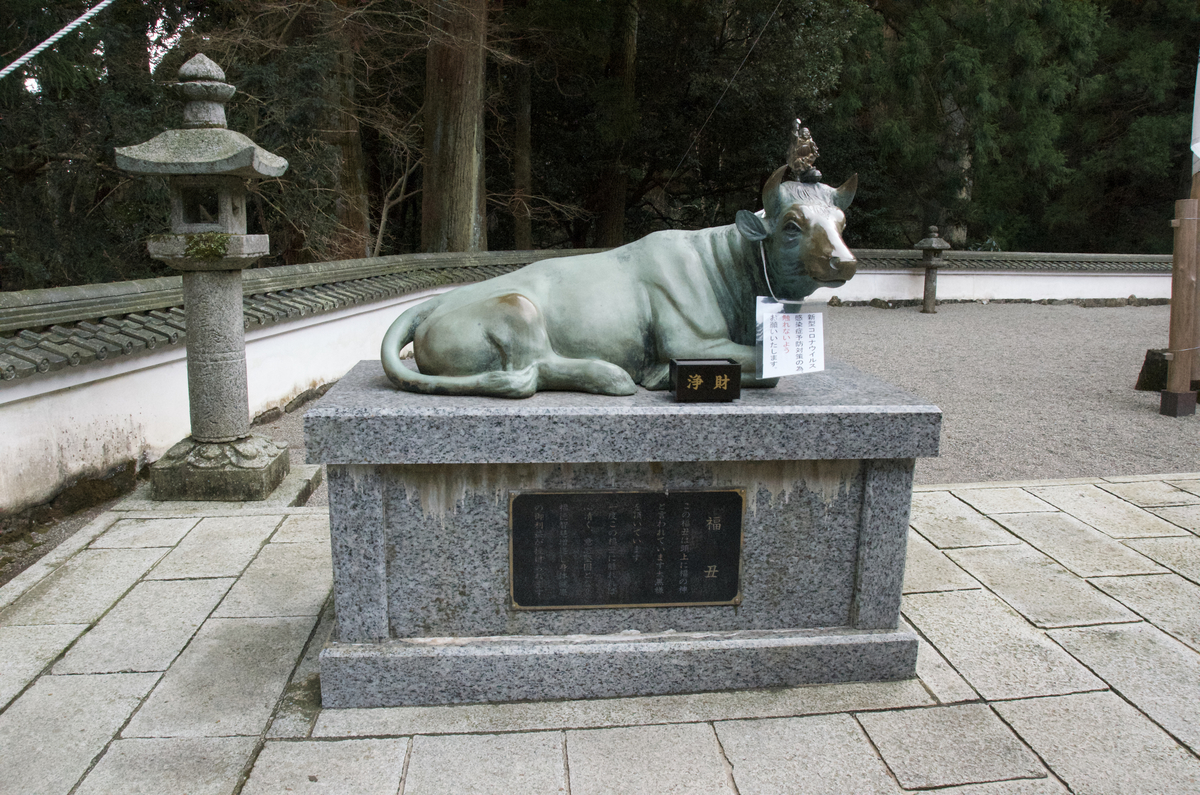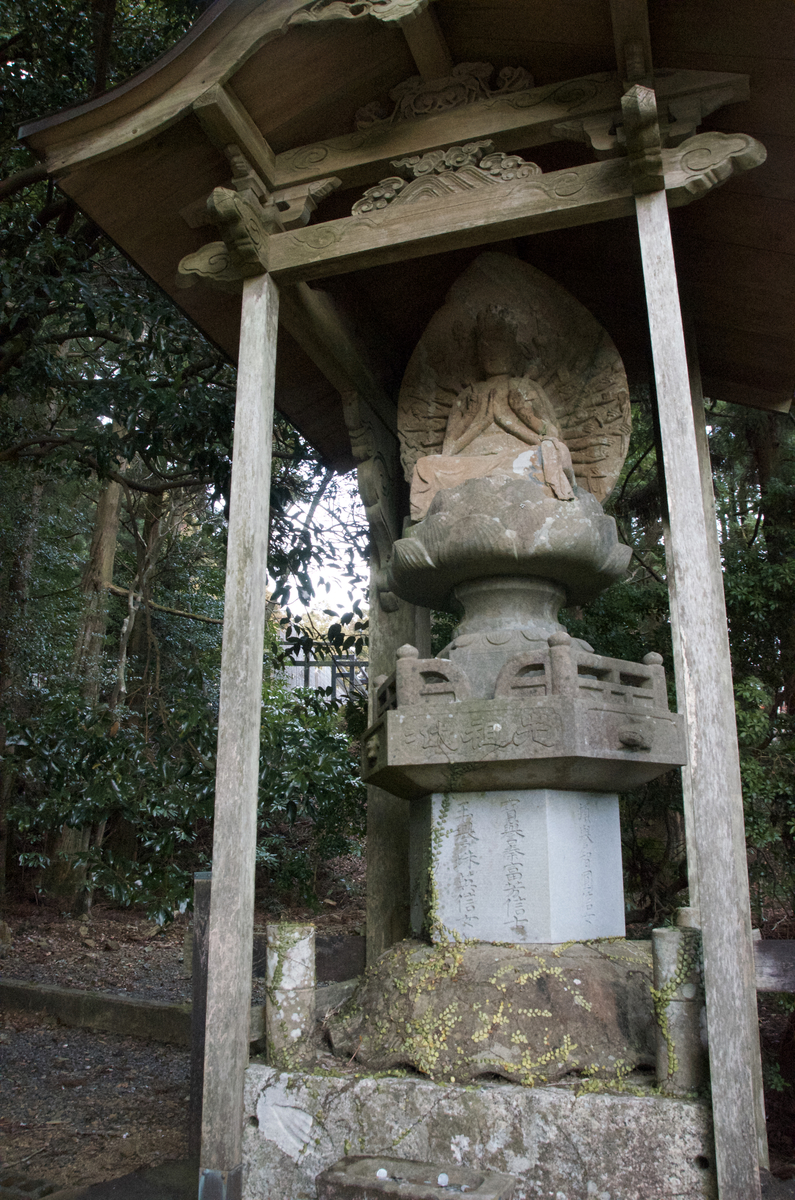

 On January the 6th 2023, we visited a temple at Mt. Asamayama in Mie Prefecture. The name of the temple is Kongoshoji(金剛證寺). It was said to be founded in 6C by a command of Kinmei Emperor(欽明天皇), and now is a temple of Rinzaishu Zen Buddhism . The temple is located at the north east of the most famous Shinto Shrine in Japan, Ise Jingu. In Chinese tradition, the north east of places is called “Kimon(鬼門)”, where daemons tend to get through to approach the places. Therefore, the special architecture such as a temple is founded at the north east of the place of interest. Kongoshoji was re-founded as the guard of Kimon of Ise Jingu by a famous Buddhism monk Kukai(空海)in 825, in the mean of syncretism of kami and buddhas common in Japanese history. Ise Jingu and Kongoshoji are deeply correlated. There are a lot of national treasures and important cultural properties, which are temporally not in public view.
On January the 6th 2023, we visited a temple at Mt. Asamayama in Mie Prefecture. The name of the temple is Kongoshoji(金剛證寺). It was said to be founded in 6C by a command of Kinmei Emperor(欽明天皇), and now is a temple of Rinzaishu Zen Buddhism . The temple is located at the north east of the most famous Shinto Shrine in Japan, Ise Jingu. In Chinese tradition, the north east of places is called “Kimon(鬼門)”, where daemons tend to get through to approach the places. Therefore, the special architecture such as a temple is founded at the north east of the place of interest. Kongoshoji was re-founded as the guard of Kimon of Ise Jingu by a famous Buddhism monk Kukai(空海)in 825, in the mean of syncretism of kami and buddhas common in Japanese history. Ise Jingu and Kongoshoji are deeply correlated. There are a lot of national treasures and important cultural properties, which are temporally not in public view.



At the right of this photo, there is Uhodo(雨宝堂). In this building, a statue of Uhodoji(雨宝童子)is present. He is said to be a manifestation of the sun goddess Amaterasuohmikami(天照大神). He is a servant of the bodhisattva of wisdom, आकाशगर्भ Kokuzobosatsu(虚空蔵菩薩).


The north east of angle is called ushitora(丑寅) in Japan. Ushi is a cow, and tora is a tiger. Therefore, statues of a cow and a tiger are present.


Huge stupas(卒塔婆) are in line beside a path.

The tomb of a famous samurai in Sengoku period, Kuki-Yoshitaka(九鬼嘉隆). He commanded a navy.

 A famous zen monk Ikkyu-Sojun(一休宗純) made a haiku, “海を呑む 茶の子の餅か 不二の雪 Umi wo nomu chanoko no mochi ka fuji no yuki (Snows on Mt. Fuji are just like a mochi rice cake accompanying Japanese tea, just as swallowing the sea)”.
A famous zen monk Ikkyu-Sojun(一休宗純) made a haiku, “海を呑む 茶の子の餅か 不二の雪 Umi wo nomu chanoko no mochi ka fuji no yuki (Snows on Mt. Fuji are just like a mochi rice cake accompanying Japanese tea, just as swallowing the sea)”.

The mosses were beautiful.

This line of islands is median tectonic line of the Japan Islands.

Kamishima Island(神島)is famous for varieties of gods/goddesses festivals. It was also a stage of Mishima-Yukio’s novel, “Shiosai(潮騒)”.

Mt. Asamayama is composed of gabbro, peridotite and serpentine. Serpentine provides a special niche for dodan-tsutsuji Enkianthus perulatus(ドウダンツツジ)and others. This place is one of northern rims of the plants in warm-temperate zone.
In Buddhist service, usually Japanese star anise Illicium anisatum(シキミ)is used. In a Japanese textbook, it is said that instead of Japanese star anise, sakaki Cleyera japonica(サカキ)is used in Kongoshoji. Sakaki is usually used for Shinto service, and this represents the syncretism. However, all the tree leaves I saw this day are from Japanese star anise. Textbooks are not always correct.



After the visit, we ate Ise beef, the root of Matsusaka beef. After that, we visited an old westernized building of Taisho era, previously used as a post office. It is now a French restaurant, an art gallery, a gallery & café, and a café named “Dandelion Chocolate”. Dandelion Chocolate is a nice chocolate shop obsessing every aspect of chocolate production.
Happy New Year!